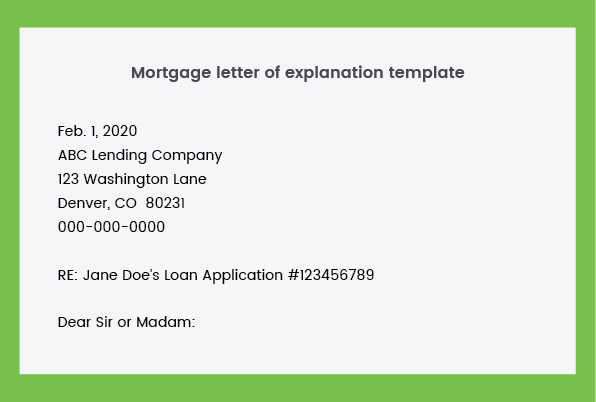Table of Content
Let's say that 10 years ago, when you first purchased your home, interest rates were 5% on your 30-year fixed-rate mortgage. Now, in 2021, you can get a mortgage at an interest rate of 3%. Those two points can potentially knock hundreds of dollars a month off your payment and even more off the total cost of financing your home over the term of the loan.
It can mean better terms and lower rates for your mortgage, and can also offer the chance to take money out of your home or change your mortgage type. This is called “cash-out” refinancing, and it is a great option if you are looking for a quick way to get a cash payout without selling your home. In general, a cash-out refinance could offer lower interest rates so it could save you more money in interest in the long run. Keep in mind that’s only one aspect of determining whether you qualify for a loan. Like other types of home loans, lenders will consider your credit history, income and assets. Once you’re approved, you’ll receive the amount in a lump sum and pay it back in regular installments.
Loan Modification Vs. Refinance: Which Is Best For You?
HELOCs, on the other hand, give you a line of credit to pull from, similar to a credit card. You can then withdraw money as needed for the next 10 or so years. Interest rates tend to be variable on HELOCs, so your interest rate and payment can change over time. The homeowner still has a single loan, although a completely new mortgage with a new term and interest rate, more than likely from a different bank or mortgage lender.

There are also HELOCs where you make one much bigger balloon payment at some point during the payoff period to fully satisfy the terms of the loan. It’s important to understand what you’re getting when you sign up for a HELOC. Your home's value and find out how much you still owe on the mortgage.
What are the similarities and differences between a cash-out refi and a home equity loan
Two of the most common are cash-out refinancing and home equity loans. There’s also the chance, should home values decline in your area, that your mortgage balances will outweigh your home’s value. Lenders may offer five-, 10-, 15-, 20-, and even 30-year home-equity loans. Most loan officers don’t mention the equity component when discussing loans.
The two most common ways to access your home equity are cash-out refinances and home equity loans. You can calculate your home equity by subtracting your outstanding mortgage balance from the current fair market value of your home. For example, if your home was recently appraised at $300,000 and you still owe $140,000 on your mortgage, your home equity is $160,000.
Guide To Fees
Unlike a cash-out refinance, a home equity loan does not replace your original mortgage. Instead, a home equity loan allows you to borrow money against the equity you’ve accrued in your house, using your home to guarantee the loan. Bankrate.com is an independent, advertising-supported publisher and comparison service. We are compensated in exchange for placement of sponsored products and, services, or by you clicking on certain links posted on our site. Therefore, this compensation may impact how, where and in what order products appear within listing categories. While we strive to provide a wide range offers, Bankrate does not include information about every financial or credit product or service.

In this scenario, refinancing with a cash-out refinance loan is cheaper, despite its higher closing costs and loan amount. This is because the cash-out refinance interest rate is significantly lower than the home equity loan rate. A home equity loan and a cash-out mortgage refinance can be used for similar purposes, like funding a major home improvement project or paying off high-interest debt. Both also use the property as collateral, which puts it at risk of foreclosure if you default on either loan. Both a cash-out refinance and a home equity loan allow you to borrow against your home’s equity, using your home as collateral.
According to the IRS, “for you to take a home mortgage interest deduction, your debt must be secured by a qualified home. How much you can deduct depends on the date of the mortgage, the amount of the mortgage, and how you use the mortgage proceeds. Check with a tax professional for more details on whether your refinanced mortgage interest is tax deductible. With a cash-out refinance, homeowners can use the cash-out to make home repairs and improvements, pay for college, a wedding, business expenses, and even pay off high interest debt.
Because your mortgage is backed by the value of your home, cash-out refinances generally offer lower interest rates than other types of loans. Consolidating debts could reduce the overall interest you pay on your financial obligations. This is an incredibly important distinction because it means you only have to manage one loan payment, which is typically easier to keep track of and budget for. Another key difference is that cash-out refinancing typically offers lower interest rates than a home equity mortgage. Although the upfront cost of a cash-out refinance is higher than the additional monthly expense of a home equity loan in the short-term, cash-out refinancing is less expensive in the long-term.
The “cash out” amount you get will depend on your home equity — your lenders will require you to go through an appraisal to determine the current value of your home. The more you’ve paid down your home, the more equity you have, and hence the more cash you can borrow. The same goes for if home prices have gone up in your area — most likely, your home equity has also gone up.
Finally, your application submission for a cash-out refinance will trigger a “hard inquiry” when the lender checks your credit report. A hard inquiry will temporarily cause a slight drop in your credit score. With a HELOC, you can borrow during the “draw period,” which is usually 5-15 years. During this draw period, the monthly payment is usually interest-only, which allows for a more affordable monthly payment. Since mortgage interest rates are tax deductible, a HELOC could lower your taxable income and help you secure a larger tax refund.
This bars some people from being able to access the equity in their homes. A cash-out refinance effectively pays out some of the equity in your home as cash—you emerge from the closing with a new mortgage and a check for cash. Cash-out refinancing is ideal for borrowers requiring a substantial sum of money for a specific purpose, such as a major home improvement.

Here are a few things that apply to both home equity loans and cash-out refinances. For example, imagine you get a $100,000 cash-out refinancing loan. $75,000 is used to pay off your existing loan, and $25,000 is your cash-out amount. If you use that $25,000 to make capital improvements to your home, the interest could be deductible, provided you meet all IRS requirements. Additionally, you’ll have to pay closing costs of about 2% to 5% .

No comments:
Post a Comment